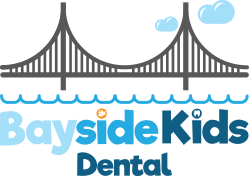
 About 30-40 million people a year avoid the dentist due to feelings of anxiety and fear. Fear of going to the dentist is common and thankfully being talked about more and more in the dental world. Many dentists go to great lengths to help patients feel comfortable. They will offer spa-like amenities like warm towels, headphones, soothing music and aromatherapy. However, the comforts don’t always do the trick. Some patients need a little more help to feel comfortable. Enter sedation dentistry. Sedation dentistry can be an excellent tool to help patients that have anxiety or fear when going to the dentist.
About 30-40 million people a year avoid the dentist due to feelings of anxiety and fear. Fear of going to the dentist is common and thankfully being talked about more and more in the dental world. Many dentists go to great lengths to help patients feel comfortable. They will offer spa-like amenities like warm towels, headphones, soothing music and aromatherapy. However, the comforts don’t always do the trick. Some patients need a little more help to feel comfortable. Enter sedation dentistry. Sedation dentistry can be an excellent tool to help patients that have anxiety or fear when going to the dentist.
There are three main levels of sedation used in dentistry each with their own delivery method. Inhalation, oral and intravenous. Sedation dentistry is where the patient will feel a level of relaxation but still be awake for the procedure. It is not going under general anesthesia. Most patients like that they stay awake, but feel calm and often, barely remember the appointment. You should take certain precautions if you will be sedated during your dental appointment. Arrange for a friend or family member to help drive you home.
Nitrous oxide, commonly known as laughing gas, is an easily administered type of sedative. Many people who are nervous about going to the dentist can ask for nitrous and have an easier experience during their cleaning or procedure. We administer nitrous oxide through a mask and the nitrous gas is mixed with oxygen. The patient takes a few deep breaths and then feels giggly and relaxed. The patient will stay awake during the dental procedure but will feel a sense of relaxation. The Nitrous is eliminated from the body quickly and so the patient is usually fine to drive themselves home after treatment. Nitrous is common during pediatric appointments.
Oral sedation is where the patient takes a pill, orally an hour before their appointment. Typically, the dentist will prescribe a sedative in the Benzodiazepine family. Medication like Triazolam are common for dental procedures. When under oral sedation, the patient is still awake, and can follow common commands, but may not remember much about the procedure. If you are under oral sedation, you will want to plan for someone to drive you home.
IV sedation is where you receive the sedative through a vein instead of orally. This allows the sedative to work quickly, and the dentist can adjust the level of sedation during the procedure. You may feel more deeply sedated than with oral sedation, but you will not ‘go under’ like general anesthesia. Not all dentists are trained in IV sedation, so if you are looking for that option, be sure to ask.
Sedation can help any nervous or anxious dental patient experience less stress during their dental appointment. If you fall anywhere on the spectrum from nervous to phobic, your dentist can help you determine which sedation option is best for you. If you have further questions or want to read more about sedation dentistry, look at the resources here: The Academy of Medical and Dental Sedation or call us and schedule a consultation.
The content of this blog is not intended to be a substitute for professional medical advice, diagnosis, or treatment. Always seek the advice of qualified health providers with questions you may have regarding medical conditions.
| Monday | 8:00am - 5:00pm |
| Tuesday | 8:00am - 4:00pm |
| Thursday | 8:00am - 4:00pm |
| Friday | 8:00am - 4:00pm |

1350 Blair Drive, Suite I
Odenton, MD 21113
(443) 698-8180

1350 Blair Drive, Suite I
Odenton, MD 21113
(443) 698-8180
Please call us at (443) 698-8180 or fill out the form below to request an appointment.
"*" indicates required fields



